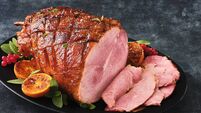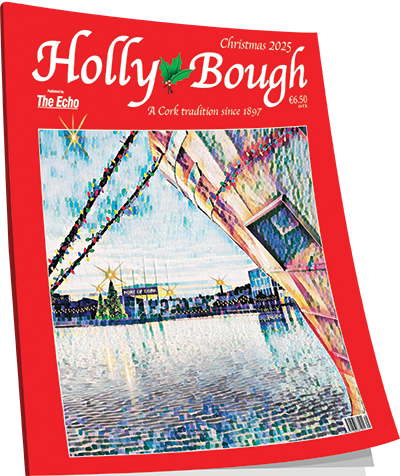Kathriona Devereux: How ‘doughnut economics’ is business model of the future

There was seemingly a boundless desire for doughnuts, and doughnut entrepreneurs scrambled to open the latest hip and happening doughnut joint.
People queued, willingly, and then coughed up good money for deep fried balls of dough doused in different forms of sugar and filled with all manner of fancy-sounding creams.
These super-charged sugar confections look pretty and are very photogenic, and drool-inducing snaps of other people’s doughnuts on Instagram apparently drove consumer demand.
A single Krispy Kreme donut shop in Blanchardstown in Dublin took in €300,000 a week in sales! That’s a lot of dough!
This is a semi-heretical opinion, but the only doughnut I think worth eating comes from a small kiosk in a building on O’Connell Street in Dublin. It’s a simple ring doughnut, still warm from the fryer and tossed in granulated sugar, served in a white paper bag. Not nutritious, but delicious.
Cork didn’t escape the boom and subsequent bust.
I’m reminding you of this brief doughnut history of Ireland by way of introduction to a new type of economic thinking that I hoping will become a more sustainable doughnut craze to sweep the land.
The doughnut economic model is the opposite of a quick sugar snack. It is a long term compass and way of thinking to redefine how we organise society, commerce, people and the environment so that humans and the planet can survive and thrive.
Devised by British economist Kate Raworth, the doughnut economic model is a break away from the traditional capitalist model of endless growth. Raworth’s 2017 book, Doughnut Economics: Seven Ways To Think Like A 21st-Century Economist, lays out how the economics of the past few hundred years have not served us well.
The pursuit of economic growth as a metric of success and economic wellbeing only works on a planet of infinite resources.
Plus millions of people are being left behind, barely surviving, not thriving, on very little.
Raworth argues that we need a new economic model fit for purpose in the 21st century if we want to address the challenges of climate change and social challenges, such as homelessness and a struggling health system. Leaving it to the market is not going to work — we need a new way.
‘Doughnut economics’ shifts away from the pursuit of expansion and growth to a model that is contained within the parameters of a doughnut shape.
The outer ring of the doughnut is the ecological ceiling representing nine planetary boundaries. If we overshoot those boundaries, we end up with ocean acidification, climate change, air pollution, etc.
The inner ring is the social foundation — housing, income and work, food and water, etc.
If we can arrange our society and economies to deliver the basics of the social foundation — health, education and security without exceeding the planetary boundaries, Raworth argues, we can have a “regenerative and distributive economy” and live in the “safe and just space for humanity” of the doughnut zone.
This is not ‘communism’ or ‘socialism’ or other old modes of economic thinking. Raworth argues that the State has not taken full advantage of the innovation it has funded and that if the State becomes greater shareholders in innovation, it will have more money to play with!
For example, smartphones incorporate GPS technology, internet technology and many more technologies that were originally developed and designed by researchers and scientists funded by government research grants. But governments let that innovation ‘transfer’ to private businesses who go on to make massive profits for their shareholders and governments get the crumbs as their tax take.
‘Doughnut economics’ is starting to move to the mainstream because it is clear that reconciling the climate crisis with the existing economic model of growth is impossible.
Amsterdam is the first city in the world to start implementing it and has worked with Raworth and her team to bring all sectors of society together to solve problems such as housing, waste and transport using the model as a compass.
President Michael D. Higgins is a fan. In October last year, Raworth tweeted: “Let’s go, Ireland! The Irish President, Michael D. Higgins, is — as far as I know — the first Head of State to publicly declare that humanity’s overriding goal should be to get into the Doughnut’s safe and just space. Who’s next?”
How about Cork? We have lots of social and economic problems to tackle. We have lots of bright and motivated citizens and public servants who want the best for Cork. We are a small, well connected city where change should be easy to implement.
We look to the Dutch for solutions to our flooding problems, maybe we could look to Amsterdam too as a model for solving our economic and social problems.
Cork City Council could engage Raworth and her team to reimagine Cork for the 21st century, so we can all live in the ‘safe and just’ sweet spot of the doughnut.







 App?
App?







